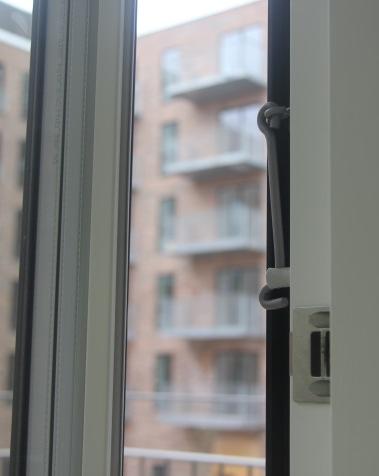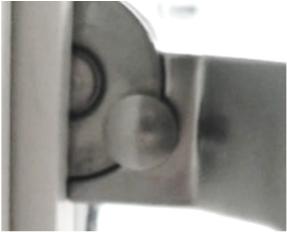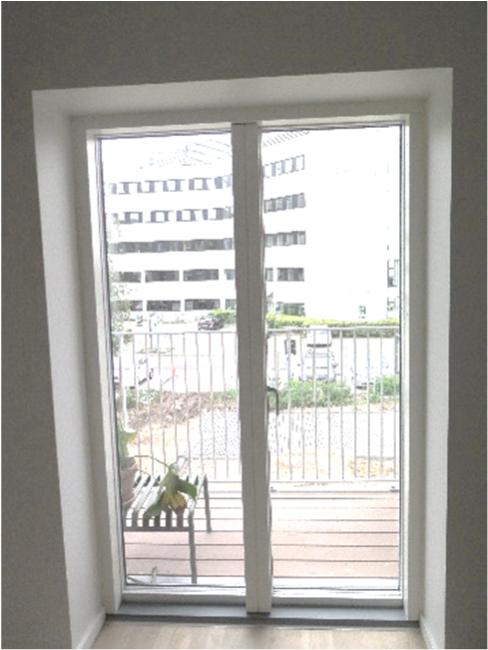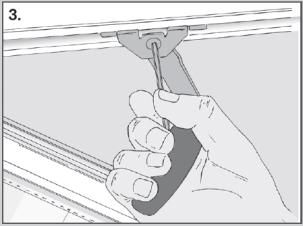
5 minute read
qwdc
from qwdc
BALCONY AND TERRACE RS:

Button for child safety lock

To open the terrace door, press the child safety lock button and turn the handle to a horizontal position before pushing the door outwards. The door opens up to 90° and is fitted with a friction brake. Close the door by pulling it towards the casing and turning the handle down to its vertical position.
Open the door by pushing the child safety lock down while turning the handle to its horizontal position and pulling the door inwards. It can open up to an angle of 90°.
The door is fitted with a handleoperated brake. Open the terrace door as much as you wish, then turn the handle down to the vertical position to activate the brake.
Close the door by turning the handle to the horizontal position to release the brake, pushing the doorframe towards the casing and turning the handle down to its vertical position.
To prevent the door blowing open, use the storm hook. Carefully pull the storm hook out of its holder.


Then place the hook in the bracket on the door.
FRENCH CASEMENT BALCONY DOORS:


Button for child safety lock


To open the terrace door, press the child safety lock button and turn the handle to a horizontal position before pushing the door outwards. The door opens up to 90° and is fitted with a friction brake.
Close the door by pulling it towards
Button for child safety lock the casing and turning the handle down to its vertical position.
Open the door and pull the lock to an almost vertical position. You can then open both doors.

Close the door by pulling it towards the casing, lock the casement and turn the handle down to its vertical position.
Friction brake: The friction brake’s slide tracks must be kept free of dust and dirt, e.g. with a cloth (1).
The tracks must not be lubricated, since this just accumulates more dirt.

The friction brake is located at the top and adjusted by turning the screw in the bracket with a 4-mm Allen key (3).
Hinges/fittings and screws See maintenance/care of hinges/fittings and screws for windows.
Wood interior See maintenance/care of exterior wood for windows.
Wood exterior See maintenance/care of interior wood for windows.

Maintenance/care of frames, windows, balcony/terrace/French doors, hinges/fittings and screws:
General Washing/cleaning of panes and frames/casings is best done using a soft cloth or soft brush and lukewarm water with a little detergent or other mild detergent without abrasive effect and solvent. Remove traces of adhesive marks and glue residue on the glass by rubbing them with a cloth dipped in methylated spirit. According to Glasindustrien, marks from suction cups and black stripes from glazing strip may take up to 2 years to disappear completely with regular washing. You could dry using a cleaning product for glass ceramic hobs. You can clean from inside. Open the window and release the child safety lock. Due to uneven thermal impact, thermal stress in the windowpane can cause the pane to crack in a distinctive fracture that is not covered by the warranty. Therefore, we advise you not to: - stick streamers, posters, plastic film, sun filters or signs on the window pane - paint the pane entirely or partially - expose the window to cast shadows - blow hot air on the pain (hair-dryer, fan heater etc.) Hinges/fittings and screws Handles and fittings should be inspected and cleaned once or twice a year, and all moving parts lubricated with acid-free lubricating oil – frequently-used windows and doors should be lubricated more frequently. Areas for lubrication are indicated by two oil drops: on the various windows and doors. For lubricating moveable parts use acid-free lubricating oil. Slide tracks The door’s slide track must be kept free of dust and dirt, e.g. with a cloth. If necessary, spray the slide tracks with a Teflon-based lubricant: e.g. Fin Lube or something similar (never regular lubricating oil!) Friction brakes should be adjusted (never lubricated, because that destroys the friction!) Aluminium – exterior Aluminium should be washed at least twice a year (e.g. when cleaning the window). Damage does not affect the durability of the aluminium, because exposed aluminium quickly forms a natural layer of oxide, which prevents corrosion and attack by white rust. Small scratches in the aluminium can be remedied with touch-up paint, but expect a difference in colour. Wood – exterior Wooden windows should be washed at least twice a year - make it a habit when cleaning the windows. Check whether cracks are forming in the exterior surface treatment. The windows should be inspected at least once a year. Fix the surface wherever necessary. Use a water-based, diffusion-open paint. Wood – interior The surface of the frame is treated with water-based paint or varnish and should be washed regularly. Gaskets, glazing strip and glazing beads should be kept clean: e.g. by wiping with clean water and a cloth that has been wrung out well, maybe with the addition of a mild detergent. Any damage to the surface treatment of the frame should be repaired. When repairing, or if you wish to paint the frame, you should use a water-based, diffusion-open paint. Avoid getting paint on the gaskets, glazing strip and glazing beads.
EXTERIOR JOINTS:

Exterior joints around windows and outside doors should be checked at least twice a year for cracks and to see whether they have dropped at the sides. If you detect any cracks or if the joint has dropped at the side, this must be notified to the operating office.




